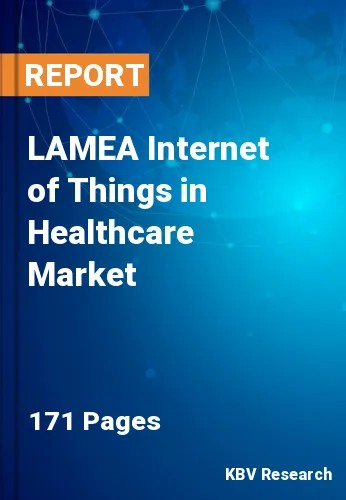The Latin America, Middle East and Africa Internet of Things in Healthcare Market would witness market growth of 20.2% CAGR during the forecast period (2022-2028).
IoT devices enable hospitals and physicians to perform medical treatments, which is a significant benefit. Compared to traditional procedures, physicians and hospitals can provide patients with care more efficiently. Therefore, the adoption of IoT in the healthcare sector may assist in meeting the needs, despite the fact that the rapid rise of the population is a major cause for concern in terms of the contribution of rising diseases and other health issues.
IoT applications are also being employed to evaluate the effective management and deployment of healthcare personnel at other locations. IoT devices embedded with sensors are used to monitor and track medical equipment. IoT devices further support hospital inventory management, environmental monitoring, temperature monitoring, and humidity regulation. Physicians and hospitals equipped with IoT can readily monitor the real-time situations of patients with life-threatening illnesses.
The healthcare sector is increasingly adopting cutting-edge technology due to an improved healthcare IT infrastructure, increased activities to promote connected healthcare services, and a rising patient population. Telehealth and telemedicine are utilized by numerous people, clinicians, and government agencies in regional nations. Telehealth facilitates communication between patients and physicians in remote locations. It makes it easier to get healthcare via specialized programs and video consultations, eliminating patients' need to visit hospitals physically. Due to the rapid improvement of digital health infrastructure, the telehealth maraket in the Middle East and Africa is quickly expanding. In light of this, the market would experience rapid expansion in LAMEA.
The Brazil market dominated the LAMEA Internet of Things in Healthcare Market by Country in 2021, and would continue to be a dominant market till 2028; thereby, achieving a market value of $9,488.5 million by 2028. The Argentina market is experiencing a CAGR of 20.9% during (2022 - 2028). Additionally, The UAE market would exhibit a CAGR of 19.9% during (2022 - 2028).
Based on End-use, the market is segmented into Hospitals & Clinics, Clinical Research Organizations and Research, Diagnostic Laboratories & Others. Based on Application, the market is segmented into Telemedicine, Patient Monitoring, Connected Imaging, Clinical Operations, Medical Management and Others. Based on Connectivity Technology, the market is segmented into Cellular, Wi-Fi, Bluetooth & Zigbee, RFID and LPWANs. Based on Component, the market is segmented into Medical Devices, System & Software and Services. Based on Medical Devices Type, the market is segmented into Stationary Medical Devices, Implanted Medical Devices and Wearable External Devices. Based on System & Software Type, the market is segmented into Remote Device Management, Network Bandwidth Management, Application Security & Network Security and Data Analytics. Based on countries, the market is segmented into Brazil, Argentina, UAE, Saudi Arabia, South Africa, Nigeria, and Rest of LAMEA.
Free Valuable Insights: The Worldwide Internet of Things in Healthcare Market is Projected to reach USD 606.7 Billion by 2028, at a CAGR of 16.5%
The market research report covers the analysis of key stake holders of the market. Key companies profiled in the report include Medtronic PLC, Cisco Systems, Inc., GE HealthCare Technologies, Inc., Microsoft Corporation, SAP SE, Infosys Limited, Oracle Corporation (Cerner Corporation), Qualcomm Inc. (Qualcomm Technologies, Inc.), Amazon Web Services, Inc. (Amazon.com, Inc.), Wipro Limited, and Intel Corporation.
By End-use
By Application
By Connectivity Technology
By Component
By Country
Our team of dedicated experts can provide you with attractive expansion opportunities for your business.

